Garnished with chic designs and with a far-reaching menu aiming to update Chinese cuisine, Bird Wo Wo clearly wants to broaden the appeal of the culinary traditions of China. And if the customer demographic observed on a recent visit is of any indication, the establishment woos an international and young crowd. Its offerings, however, are hit and miss.
First-time diners could be forgiven for confusing the Chinese restaurant with a cafe intended to titillate a female clientele. Brightly lit, the interior has a sleek color scheme of iron gray and white, adorned with decorative, feather-shaped patterns, mirrors and hanging ornaments made of beads. Those who wish to snap selfies and shout “How cute!” (好可愛) amid young women and girls might be disappointed though. On the weekday evening my dining partners and I visited, the majority of the diners appeared to be youngish white-collar workers. A cacophony of languages was also heard. Next to our table, a group of Japanese-speaking, suit-wearing businessmen seemed to enjoy their meals with bottles of Taiwan beer (NT$150 per bottle). On the other side, several men and women with Singaporean accents discussed work over glasses of red wine.
As for the food, the restaurant’s kitchen is designed to appeal to as many customers as possible, covering various regional cuisines ranging from Jiangsu and Zhejiang to Szechuan and Cantonese. Traditional dishes are often given an innovative twist. The boiled sliced pork and cucumber with garlic sauce (爽口薄片晾衣, NT$290), for example, is a creative rendition of boiled pork with garlic sauce (蒜泥白肉), a staple plate of the Szechuan cuisine. The photogenic dish offered a surprisingly savory explosion of flavors in the mouth, mixing the thin slices of fat-streaked pork, the freshness of cucumbers with the thick dipping sauce of garlic and honey. It was our favorite course of the evening.
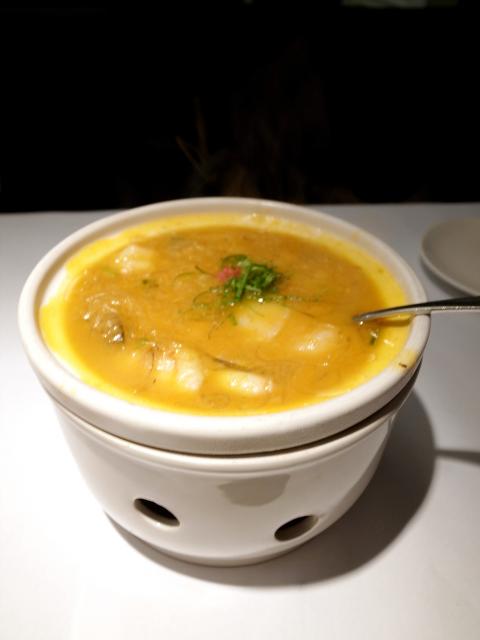
Photo: Ho Yi, Taipei Times
Another innovative attempt is the shaoxing millet bread with deep fried dry vegetables (紹興干菜窩窩頭, NT$320). Composed of preserved vegetables deep fried with pork and wrapped in brown sugar-flavored mantou (饅頭), or steamed buns, the dish was a saliva-inducing balance between the crispy, salty filling and the sweet, soft bun. The outer parts of the buns, however, were disappointingly soggy and left a blemish to the otherwise fun creation.
Recommended by our wait person, the braised dry pig skin with stinky tofu (美極皮肚臭豆腐, NT$360) didn’t impress with the less-than-ordinary quality of tofu, and the portion was skimpy for the price. Nor were we particularly enthusiastic about the braised crab roe with seafood and green bean noodle in casserole (蟹黃海鮮粉絲煲, NT$380), which was bland and dominated by sticky noodles.
Other popular dishes include deep-fried balsam pear (不像苦瓜, NT$280), deep-fried shrimp balls (灌湯黃金蝦球, NT$380), stewed pork with cabbage and eggs (提督官府燉菜, NT$380) and the chef special in casserole (宮廷一品皇罈子, NT$250), which features scallops, pig knuckle and king oyster mushrooms.
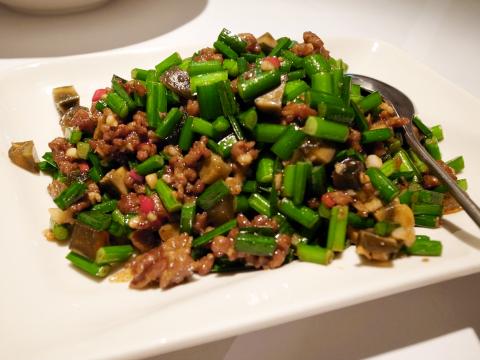
Photo: Ho Yi, Taipei Times
Surprisingly, the restaurant also has a small afternoon-tea menu filled with waffles, sandwiches, chocolate drinks and even a chocolate fondu. Why this Chinese restaurant wants to sell coffee and cake is anyone’s guess, but the Western-style offerings feel like an afterthought and might stretch the establishment’s creativity a bit too much.
Bird Wo Wo has several other venues — Neihu (內湖) and Tamsui (淡水) districts as well as in Greater Taichung and Greater Kaohsiung. For more information, visit the restaurant’s Web site at www.birdwowo.com.
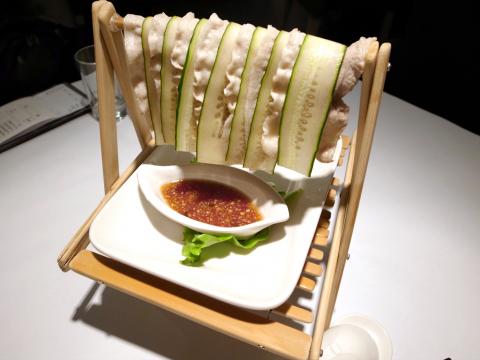
Photo: Ho Yi, Taipei Times
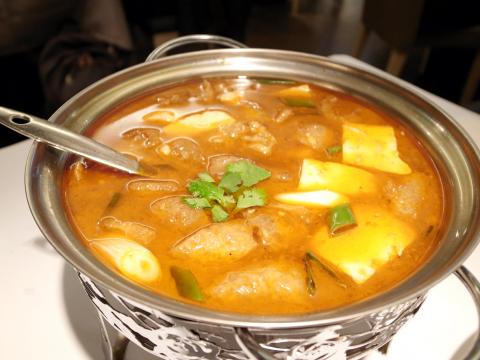
Photo: Ho Yi, Taipei Times
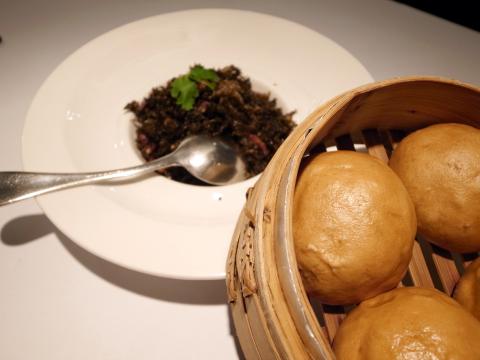
Photo: Ho Yi, Taipei Times

The Taipei Times last week reported that the rising share of seniors in the population is reshaping the nation’s housing markets. According to data from the Ministry of the Interior, about 850,000 residences were occupied by elderly people in the first quarter, including 655,000 that housed only one resident. H&B Realty chief researcher Jessica Hsu (徐佳馨), quoted in the article, said that there is rising demand for elderly-friendly housing, including units with elevators, barrier-free layouts and proximity to healthcare services. Hsu and others cited in the article highlighted the changing family residential dynamics, as children no longer live with parents,
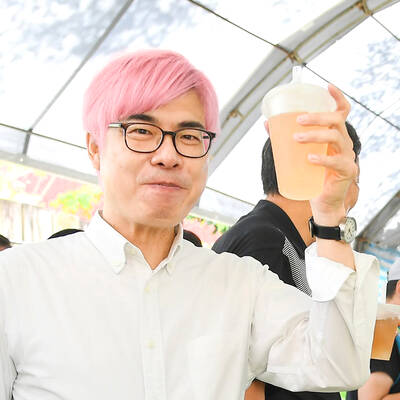
It is jarring how differently Taiwan’s politics is portrayed in the international press compared to the local Chinese-language press. Viewed from abroad, Taiwan is seen as a geopolitical hotspot, or “The Most Dangerous Place on Earth,” as the Economist once blazoned across their cover. Meanwhile, tasked with facing down those existential threats, Taiwan’s leaders are dying their hair pink. These include former president Tsai Ing-wen (蔡英文), Vice President Hsiao Bi-khim (蕭美琴) and Kaohsiung Mayor Chen Chi-mai (陳其邁), among others. They are demonstrating what big fans they are of South Korean K-pop sensations Blackpink ahead of their concerts this weekend in Kaohsiung.

Taiwan is one of the world’s greatest per-capita consumers of seafood. Whereas the average human is thought to eat around 20kg of seafood per year, each Taiwanese gets through 27kg to 35kg of ocean delicacies annually, depending on which source you find most credible. Given the ubiquity of dishes like oyster omelet (蚵仔煎) and milkfish soup (虱目魚湯), the higher estimate may well be correct. By global standards, let alone local consumption patterns, I’m not much of a seafood fan. It’s not just a matter of taste, although that’s part of it. What I’ve read about the environmental impact of the
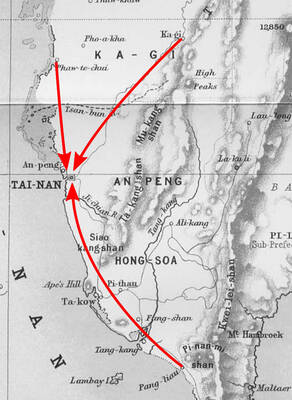
Oct 20 to Oct 26 After a day of fighting, the Japanese Army’s Second Division was resting when a curious delegation of two Scotsmen and 19 Taiwanese approached their camp. It was Oct. 20, 1895, and the troops had reached Taiye Village (太爺庄) in today’s Hunei District (湖內), Kaohsiung, just 10km away from their final target of Tainan. Led by Presbyterian missionaries Thomas Barclay and Duncan Ferguson, the group informed the Japanese that resistance leader Liu Yung-fu (劉永福) had fled to China the previous night, leaving his Black Flag Army fighters behind and the city in chaos. On behalf of the